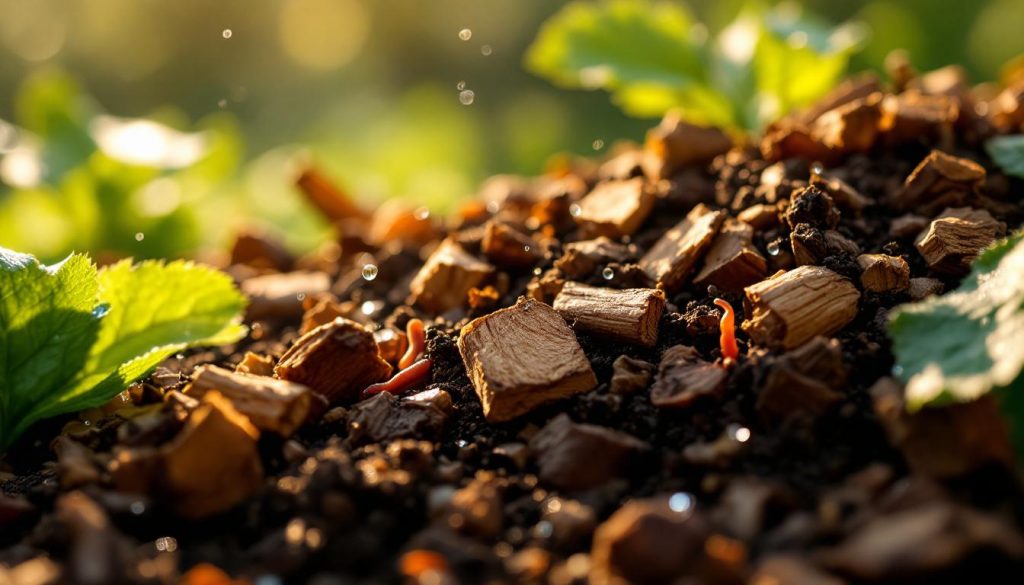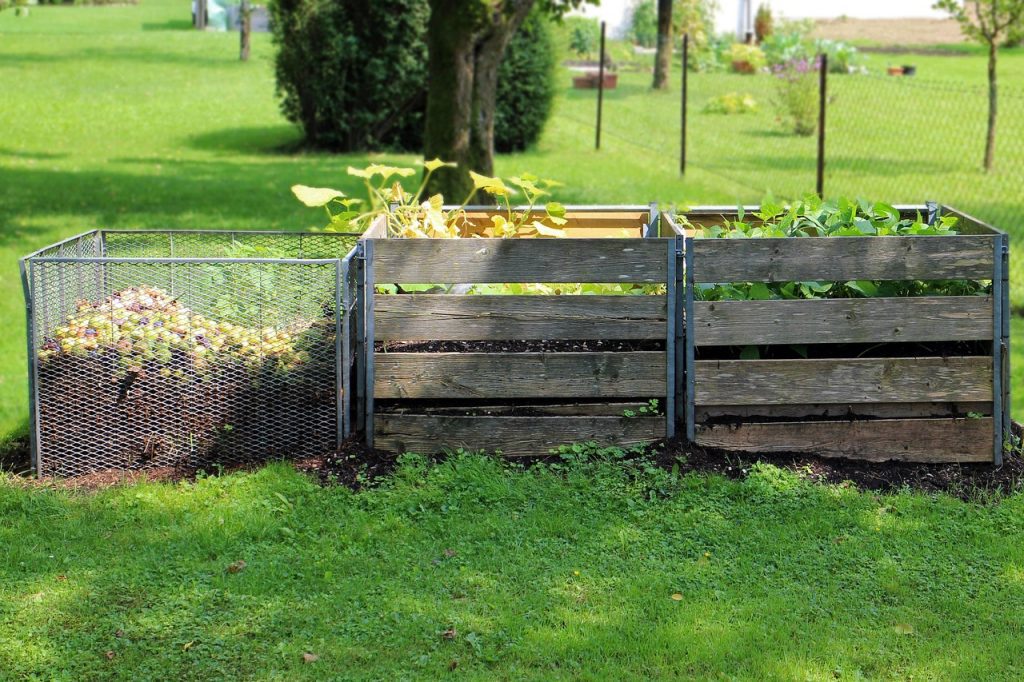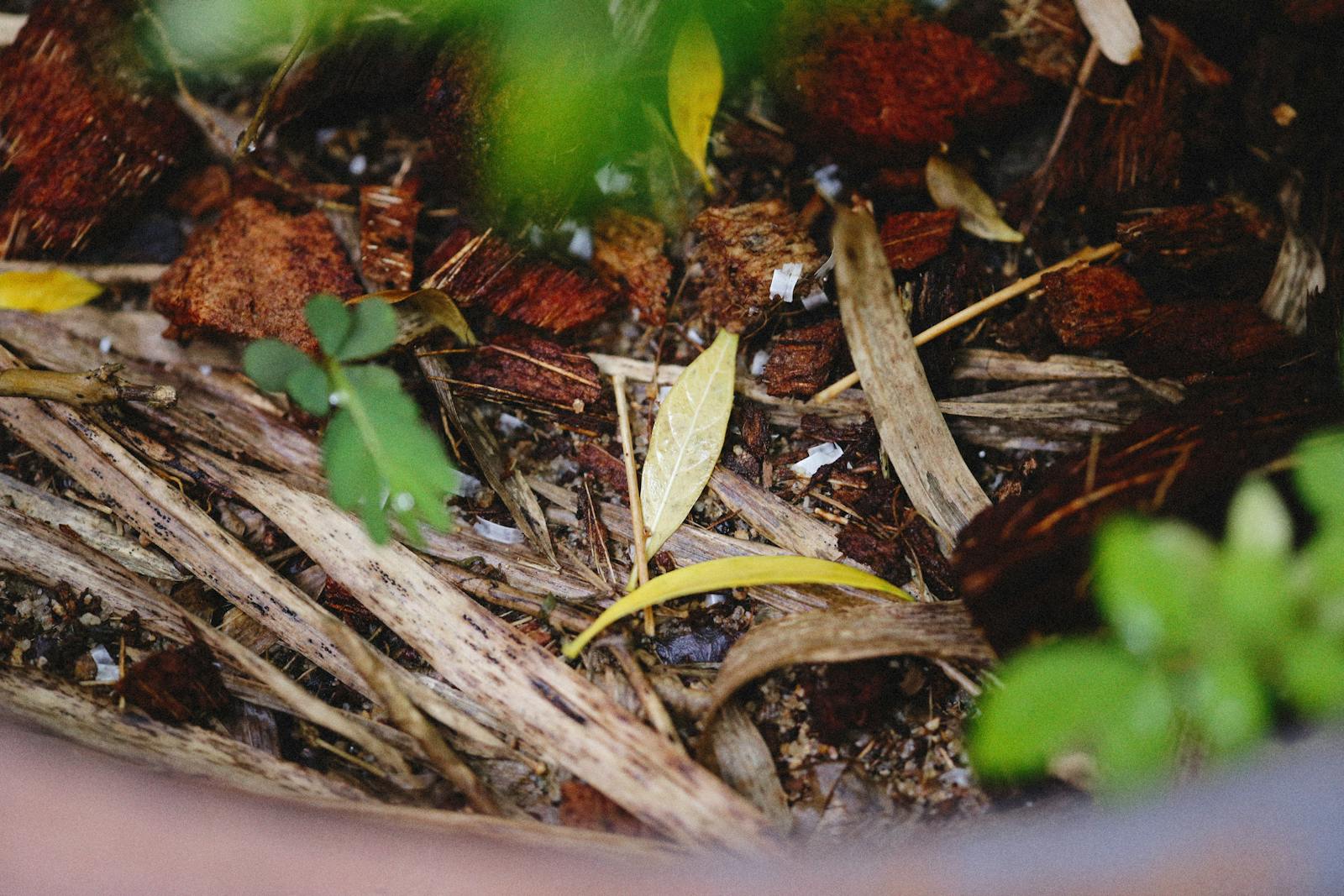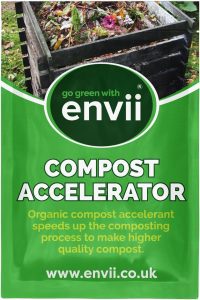Simple Fixes for Compost, Vermicomposting, and Compost Tumblers
Troubleshooting Clumpy Compost Piles for Beginners offers friendly solutions to common issues, helping you turn soggy lumps into fresh, healthy compost.
Composting is one of the simplest ways to recycle kitchen scraps and garden trimmings, turning them into something valuable for your garden.
It’s all about giving food and yard waste a second life by letting tiny organisms break them down and create rich, crumbly compost.
For anyone looking to live greener or save money on fertilizers, composting just makes sense.
When starting out, many people get frustrated by clumpy compost piles. This common problem happens when there’s too much moisture, not enough air, or the mix is heavy on a single ingredient.
Beginners often worry, but the truth is fixing clumps is straightforward with a few easy tweaks.
This guide on troubleshooting clumpy compost piles for beginners will show how to spot, solve, and prevent the most common compost problems.
You’ll learn practical steps whether you’re working with a traditional heap, a compost tumbler, or even trying your hand at vermicomposting. And don’t stress—composting doesn’t have to be perfect!
Anyone can do it, and every small step helps build a healthier planet.
For more on how to get started, check out these simple ways to begin composting at home.
Key Takeaways:
- Composting is for everyone—clumps happen to beginners and experts.
- Too much water, poor mixing, or the wrong balance of materials cause clumpy piles.
- Simple actions can break up clumps in any pile, compost tumbler, or vermicomposting setup.
- Small mistakes are normal—successful composting is a learning process.
- Following this guide will help you create healthy, crumbly compost for your garden.
Ready to tackle those stubborn clumps and enjoy sweet-smelling, crumbly compost?
Let’s get started!

What Causes Clumpy Compost Piles?
A compost pile should feel light and crumbly, but sometimes, it turns into a dense, sticky mess that doesn’t want to break apart.
If you’re troubleshooting clumpy compost piles for beginners, you’re not alone. These clumps pop up for several reasons, but the fixes are usually straightforward.
Understanding why compost, vermicomposting bins, or even your compost tumbler become packed and lumpy will help keep your pile fluffy and healthy from the start.
Too Much Moisture, Not Enough Air
If your compost pile feels like a soggy sponge or has patches that stick together in gluey lumps, moisture is often the culprit.
Composting works best when there’s enough water for microbes to work but not so much that air can’t move through.
- Too much rain or frequent watering can saturate your pile.
- Without air, microbes slow down and wet materials stick together.
- This is common in closed spaces like a compost tumbler or worm bin, especially if drainage or airflow is blocked.
Imagine squeezing out a soaking-wet towel. That’s how heavy a clumpy pile can get when water overpowers everything else.
Key takeaway: Aim for “wrung-out sponge” moisture—the pile should feel moist but never dripping.
If yours is too wet, add dry browns like straw or shredded cardboard and turn the heap to let it breathe.
Want extra details on solving soggy piles? Take a look at this guide on fixing a soggy compost pile.
Imbalance of Greens and Browns
Clumping often signals that the mix of greens (nitrogen-rich items) and browns (carbon-rich items) isn’t right.
A pile with loads of food scraps but little dry material will get sticky and packed, much like a pancake batter with too little flour.
- Too many kitchen scraps and not enough leaves or paper make things mushy.
- Grass clippings added all at once or in thick layers can mat down and stop airflow.
- Clumps also form in vermicomposting bins if there are more food scraps than shredded bedding for the worms.
Table: Signs Your Compost Needs More Browns
| Symptom | Likely Cause | Simple Fix |
|---|---|---|
| Dense, sticky clumps | Too many greens, too wet | Add dry browns, mix well |
| Bad, sour smell | Anaerobic conditions, wet | Add paper/leaves, stir |
| Worm bin smells | Excess food scraps, no bedding | Add shredded cardboard |
Tip: Follow the “2 parts browns to 1 part greens” rule.
For a deep dive on keeping the right balance, see the Compost Charm guide to balancing nitrogen and carbon in compost bins.
Little or No Turning/Mixing
Compost holds together best when it gets regular mixing and air.
If your pile’s been sitting too long without a stir, the center can clump up, and the outer edges may stay dry.
- Traditional piles need forking or turning at least every couple of weeks.
- Compost tumblers work faster but only if you spin them regularly.
- In worm bins, gently mix bedding between feedings to avoid dense, soggy layers.
Without movement, materials pack down, trapping moisture in some places and leaving others dry.
Key takeaway: Make it a habit to turn your compost. A weekly churn with a pitchfork or a quick tumble will keep clumps away and microbes happy.
Adding Materials in Large Chunks
Drop a whole apple into the bin, and it’ll take ages to break down. Large or dense pieces of waste (like corncobs, broccoli stalks, or wads of old bread) easily form the core of a clump.
- Shred or chop kitchen scraps and garden waste before adding to the pile.
- If you spot a big chunk, break it apart when turning the heap.
For vermicomposting, the tinier the scraps and bedding, the quicker the worms work and the less chance for clumps.
Overloading or Packing the Bin
Too much of anything at once—especially in a small compost tumbler or worm bin—can compress the whole pile.
Heavy loading pushes out air and creates cold, compacted sections where nothing happens.
- Fill the bin or tumbler a little at a time and allow oxygen to circulate.
- In small setups, less is more: keep adding new materials in thin layers.
- Avoid squashing or compacting the pile to “fit more.” Air is just as important as food!
Special Note: Clumps in Vermicomposting
Vermicomposting piles can clump up if bedding is too sparse, food is added all at once, or bedding isn’t mixed in.
Worms need space and dry fibers to wiggle through.
- For a worm-friendly bin, always top off fresh food scraps with a fluffy layer of bedding.
- If you notice slimy clumps, boost the bedding and hold off on feeding until things dry out a bit. Get step-by-step tips with the Compost Charm guide to starting a vermicompost bin at home.
Key Takeaways
- Clumpy compost piles are almost always caused by too much moisture, a lack of air, an overload of green material, or no turning.
- Regular turning, balancing green and brown ingredients, and chopping up waste will keep clumps away.
- Every compost system—heap, tumbler, or worm bin—needs moisture, air, and a balanced mix for crumbly success.
- Starting small and adding layers bit by bit helps keep everything light and well-aerated.
For more answers and troubleshooting tips, you can find an easy, practical compost troubleshooting guide that covers everything from moisture to airflow.
A healthy, fluffy pile is only a few steps away. Stay positive and enjoy the process!
Step-by-Step Solutions for Clumpy or Soggy Compost
If you’re staring at a lumpy, soggy compost pile and feeling stuck, you’re not alone.
Troubleshooting clumpy compost piles for beginners comes down to a few practical fixes that anyone can use, whether your pile lives in the garden, a compost tumbler, or even in a vermicomposting bin.
This guide helps you break up stubborn clumps and get back on track with a pile that’s light, fluffy, and smells fresh.
Focus on the three big steps below to keep your compost thriving and your garden smiling.
Turning and Mixing: The Key to Aeration
Turning your compost isn’t just a chore—it’s the secret to crumbly, well-aerated compost.
Imagine baking a sponge cake: if you skip whipping in the air, you end up with a pancake, not a cake.
Compost works the same way. Without air, it turns into a heavy, compact mess.
- Use a garden fork and dig into the center of a traditional heap, pulling outer materials in and breaking up dense sections.
- For a compost tumbler, spin it once or twice a week. These short spins keep everything mixed and prevent wet lumps.
- In vermicomposting, gently fluff the bedding with your hands between feedings to keep it loose.
Regular turning breaks up matted lumps, gets oxygen back into the pile, and helps prevent those nasty earthy smells.
Sticking to a schedule—such as a quick turn every week—can transform even the clumpiest pile.
If you want more about why mixing matters and how to do it easily, visit this handy guide on compost turning and fast composting.
Balancing Browns and Greens: Smart, Simple Ratios
A common cause of slime or clumps is the wrong mix of materials. Greens bring nitrogen and tend to be wet—think fruit peels, grass clippings, or veggie scraps.
Browns supply carbon and keep the pile from turning messy—think dried leaves, shredded newspaper, or straw.
The easy formula: Use roughly two parts browns to every one part greens. If your pile feels sticky or you see slimy spots, it’s a sign to add more dry, carbon-rich material. Good choices include:
- Shredded paper or cardboard
- Dry grass or autumn leaves
- Straw or hay
- Pine needles or small twigs
Sprinkle these browns into the pile as you add greens, or toss them in when you notice excess wetness.
Mixing well after adding helps even out moisture and air flow. Need more tips for balancing your bin?
Check out information on the benefits of worm composting in small spaces if you’re working with a vermicomposting setup.
Moisture Management: Too Wet or Too Dry?
A soggy compost pile is almost always a clumpy mess.
The squeeze test is your friend: pick up a handful of compost, squeeze it hard, and check what happens.
- If a few drops fall and it feels like a wrung-out sponge, you’re good.
- If water streams out or it feels like sludge, your compost is too wet.
- If it crumbles apart and feels dry, your pile needs a splash of water.
Adding dry browns helps soak up excess moisture after heavy rain or too many wet scraps.
During dry spells, use a watering can to lightly moisten the pile while turning. Avoid letting the pile get soaking wet; it should never feel like a swamp.
For outdoor bins, keep an eye out after a rainstorm.
Throw a tarp over the pile if a downpour is coming, and always check drainage if you’re using a compost tumbler or closed bin.
For more detail, this guide to fixing a soggy compost pile has a great checklist of solutions.
Key Takeaways:
- Turning the pile keeps air moving, stops clumps, and helps compost break down smoothly.
- Aim for a 2:1 ratio of browns to greens. If your pile is slimy, add more browns.
- The squeeze test tells you if your compost is too wet or dry—adjust moisture as needed.
- Regular maintenance stops trouble before it starts, whether you compost in a heap, bin, tumbler, or worm farm.
- For additional support with worm bins in tough conditions, see these winter worm bin tips for thriving vermicomposting.
Solving clumps is all about habits and simple checks. With each small step, you’ll get closer to that fluffy, finished compost your garden loves.
Preventing Clumpy Compost in the Future
Clumpy compost piles can make beginners feel defeated, but a few easy practices can stop clumps before they even start.
When you troubleshoot clumpy compost piles for beginners, prevention is smoother than endless fixes.
It’s all about a regular routine and having a basic plan. Here’s how you can make sure your compost, compost tumbler, or vermicomposting bin stays light, fluffy, and full of life.
Keep the Right Balance from Day One
Getting the mixture right is like following a simple recipe.
Too many “greens” (like food scraps or grass) can turn the pile into a sticky mess, while too many “browns” (like dry leaves or cardboard) can make it slow to break down. Compost thrives with both.
- Aim for two parts browns to one part greens every time you add material.
- If you’re only tossing in kitchen scraps, keep a small bin of shredded paper or dry leaves handy to sprinkle in at the same time.
- Grass clippings love to mat together, so add them in thin layers and mix well with dry materials.
If you’re new to setting up the perfect pile, you can follow these tips for starting composting at home.
This guide explains the mix and provides ideas for easy materials you can find around the house.
Compost Faster! Check it Out!
Chop and Shred: Smaller Is Better
Think of your compost like a salad—the smaller the pieces, the faster and more evenly they break down.
Large chunks, like whole fruit or thick stems, trap moisture and make clumps.
- Cut, shred, or tear scraps before adding them to any pile or bin.
- For woody stems or cardboard, use scissors or a garden shredder.
- In a compost tumbler or worm bin, this makes a big difference in airflow and breakdown speed.
Keep the Air and Moisture Just Right
Plants need air and so does your compost. Clumps form when there’s trapped moisture and not enough air to let materials break down freely.
- Test your pile by taking a handful and squeezing. It should feel like a wrung-out sponge.
- Too wet? Add dry browns and mix well.
- Too dry? Sprinkle a little water while turning.
- Aerate regularly by turning the pile or spinning the compost tumbler once or twice a week.
- In vermicomposting, gently fluff bedding to prevent packed layers and let worms move easily.
Protecting your pile from heavy rain and placing it where it gets some airflow stops soggy, compact zones from forming.
Tarp covers or roof overhangs work well for outdoor bins.
Add in Layers, Don’t Dump and Run
Clumpy compost often starts with major overloads—dumping in a massive bag of moist grass or a mountain of kitchen scraps all at once.
- Add in small, regular batches instead.
- Layer greens and browns each time you add to the pile or bin.
- In compost tumblers, always tumble after adding new materials to keep a loose, airy mix.
Regular additions allow microbes to work at a steady pace and prevent smelly, dense patches.
Use Bedding Wisely in Vermicomposting
Worms love a comfy bed just as much as we do.
A well-bedded vermicomposting bin avoids sticky, tight clumps and keeps worms thriving.
- Always top-off food scraps with dry bedding like shredded cardboard or coconut coir.
- Keep an extra container of dry bedding nearby for easy fixes after heavy feedings.
- Pause food additions if you notice slimy or heavy patches, and add extra bedding instead.
This keeps worms active and your compost light and easy to harvest.

Monitor and Adjust Through the Seasons
Compost piles change with the weather. Rain, heat, or cold can all create new risks for clumping.
Regular checks help you stay ahead.
- During rainy spells, check moisture and cover bins as needed.
- In hot, dry months, check dryness and keep the pile moist (but not soggy).
- For more seasonal guidance, explore composting calendar tips that show how to adjust your routine through the year.
Troubleshooting Clumpy Compost Piles: A Handy Reference Table
It helps to have a quick reference to common problems and their simple solutions.
| Problem | Likely Cause | Quick Fix |
|---|---|---|
| Sticky or wet clumps | Too many greens, not enough air, rain-soaked | Add browns, mix, cover if needed |
| Dense in the middle | No turning, large chunks, compacted layers | Aerate, break up pieces, add browns |
| Worm bin clumping | Sparse bedding, heavy feeding | Add bedding, pause feeding |
| Slow breakdown | Too dry, too many browns, not enough mixing | Moisten, add greens, turn pile |
This table offers a fast way to match your symptoms with the first steps to try.
Simple Habits for a Fluffy, Healthy Pile
Preventing clumpy compost isn’t about fancy gadgets or complicated rules. It comes down to a few easy habits, repeated whenever you add to your compost:
- Always have dry browns ready alongside your kitchen scraps.
- Cut or shred materials before tossing them in.
- Mix every new addition, spin the tumbler, or fluff worm bedding regularly.
- Keep an eye on moisture using the squeeze test and adjust as needed.
- Check your pile’s smell and texture—healthy compost smells earthy and feels crumbly.
Want to try more composting approaches? Get a quick overview with these six effective composting methods and see what fits your style and space best.
Key Takeaways
- Compost piles stay clump-free by mixing two parts browns to one part greens.
- Chop and shred scraps for faster, more even breakdown.
- Check moisture, protect from rain, and always add in thin layers—never huge loads.
- Keep worm bins fluffy with regular bedding and light mixing.
- Regular checks and small tweaks keep your composting, vermicomposting, or tumbler system healthy and easy to manage.
If you ever get stuck or have a head-scratcher, don’t forget you can use Compost Charm’s Ask A Question tool for instant answers to common composting questions.
By building small, steady habits, you’ll save time, speed up decomposition, and end up with beautiful, crumbly compost, ready for your plants to thrive.
Key Takeaways for Beginners
If you’ve found yourself knee-deep in a lumpy or soggy compost pile, don’t worry—this is a road almost every composting beginner travels.
Troubleshooting clumpy compost piles for beginners is all about picking up a few basics and understanding that a fluffy, healthy pile is closer than you think.
Let’s break down the essential things you’ll want to remember when dealing with compost, vermicomposting bins, or compost tumblers.

Photo by Dino
Composting: Simple Fixes Go a Long Way
Starting out, you might feel like your pile will never look like those perfect, crumbly heaps online.
That’s normal. Even the best composters face clumps, soggy patches, or slow breakdown.
The good news? Most problems only need small, regular fixes:
- Balance your greens and browns. Think of it like baking. Too much of one ingredient, and the whole batch changes. Stick to two parts dry browns (leaves, cardboard) for every one part green (food scraps, grass).
- Keep air and water in check. Your pile should feel like a wrung-out sponge—not too wet, not too dry.
- Turn and mix often. Give your pile a weekly stir with a garden fork, or spin your compost tumbler every time you add scraps. This stops clumps from forming and spreads out moisture.
These are habits, not chores. With every turn, layer, or squeeze test, you’ll get more comfortable reading your compost’s signals.
Small Steps Make Big Results
Making compost doesn’t require fancy gadgets or a science degree. Instead, it’s about steady effort and paying attention.
Here are a few tricks that work for all systems, whether you use a heap, a compost tumbler, or a worm bin:
- Chop or shred scraps before adding. The smaller the piece, the quicker it breaks down and the less likely it is to stick together.
- Add in thin layers instead of big clumps. Spread your kitchen scraps and browns smoothly instead of dumping everything all at once.
- Top off worm bins with extra bedding. For vermicomposting, worms love to burrow through dry bedding. It keeps things fluffy and prevents slimy clumps.
Even if things go sideways, you’re never far from an easy fix.
If you find your pile heavy and stuck together, just add dry browns, turn it well, and let in some air.
Sometimes, just a little mixing and patience does the trick.
Troubleshooting Checklist for Beginners
To keep clumps at bay, use this quick checklist when you’re troubleshooting clumpy compost piles for beginners:
| Issue | What To Check | Quick Fix |
|---|---|---|
| Soggy, packed clumps | Moisture and air flow | Add dry browns, turn the pile |
| Dense, slow spots | Not enough mixing | Mix and break up large chunks |
| The worm bin is slimy | Bedding and food amount | Add dry bedding, pause on feeding |
| Bad smell | Too much wet, “green” stuff | Add browns, aerate, and turn |
Each one of these problems has a simple solution. For extra help, the Eartheasy guide to fixing soggy compost is packed with basic troubleshooting examples if you ever feel stuck.
Key Points Every Beginner Should Remember
Let’s round up the main takeaways for anyone troubleshooting clumpy compost piles for beginners:
- Compost wants balance. Mix “greens” and “browns” to keep everything happy.
- Air and moisture matter. Squeeze a handful to check if it’s like a damp sponge.
- Movement helps. Turning or spinning is like fluffing a pillow—do it often!
- Start small. Add in layers or small amounts, rather than one giant dump.
- Worm homes need dry bedding. In vermicomposting, more bedding means happier, less clumpy bins.
Still have questions? For even more practical advice, UConn’s Compost Troubleshooting Guide is a great resource for first-time composters.
Composting isn’t about being perfect. It’s about doing a little better each time, learning as you go, and watching waste turn into something good for your garden and the planet.
With these beginner tips, you’ll get the hang of it—and your plants will thank you!
Troubleshooting Clumpy Compost: FAQ
If you’re finding stubborn clumps in your compost, you’re definitely not alone. Many new (and even seasoned) composters run into this sticky situation.
Some bins or piles turn out perfectly crumbly; others become packed and damp, especially when using compost tumblers or trying vermicomposting.
Check Out Best Compost Tumblers
Good news: troubleshooting clumpy compost piles for beginners only takes a little curiosity and a handful of home fixes.
Let’s jump into the most frequently asked questions and keep your composting journey on track.
Why Does My Compost Get Clumpy in the First Place?
There are a few main reasons clumps appear:
- Too much moisture: Extra rain or too many juicy food scraps make the pile heavy and sticky.
- Lack of air movement: Without turning or mixing, materials pack tight, creating gluey lumps.
- Imbalance of greens and browns: Too many “greens” (like fruit and veggie scraps) without enough “browns” (dry leaves, cardboard) encourages stickiness.
This holds true whether you’re running an outdoor pile, a compost tumbler, or a worm bin.
Even the best-kept bins become clumpy now and then, especially if you add grass clippings in thick layers or don’t chop your kitchen waste into smaller pieces.
How Can I Fix a Clumpy Compost Pile Quickly?
Here’s an easy checklist for breaking up those lumps:
- Turn the pile: Use a garden fork or spin your compost tumbler every few days. This lets in air and separates wet clumps.
- Add dry browns: Toss in shredded newspaper, dry leaves, or straw. Browns soak up moisture and make the mix less sticky.
- Chop big pieces: Break down bulky waste into smaller chunks so it doesn’t gather into balls.
- Layer materials: Alternate wet greens with dry browns as you build your pile for better air pockets.
With worm bins, add extra fluffy bedding and pause feeding if things feel slimy.
Mixing often helps prevent mats from forming. For details on tackling soggy compost, check out this soggy compost pile guide.
What’s the Best Way to Prevent Clumps in the Future?
Most clumpy compost problems can be dodged with a few simple habits:
- Stick to the “two parts browns, one part greens” rule.
- Turn or mix every week, especially after rain.
- Add materials in thin layers, not big dumps.
- Keep an eye on moisture. Your compost should feel like a damp sponge, not a wet towel.
Frequent turning is key, no matter your method. If you don’t turn your pile, it can get compacted and slow to break down.
To know why this matters, see the importance of turning compost.

Photo by Dino
My Compost Tumbler is Especially Clumpy. What Should I Do?
Compost tumblers are supposed to make things easy, but they sometimes keep things too damp or let clumps set in if not spun often enough.
- Spin your tumbler a couple of times a week for best results.
- Don’t fill past two-thirds, so materials have room to mix.
- Avoid adding lots of grass or wet ingredients all at once.
For step-by-step help when your compost tumbler isn’t breaking down materials as it should, review ways to fix a slow-compost tumbler.
Why Is My Vermicomposting Bin So Sticky and Dense?
Worms are great for composting, but their bins can get heavy if you add food too fast or skip adding bedding.
- Always top new food scraps with a layer of shredded paper or coconut coir.
- Mix gently to break up mats and aerate the bedding.
Light, regular mixing and a steady supply of dry bedding make a big difference in worm bin health.
This keeps things fluffy and prevents sticky clumps.
When Should I Worry About Clumpy Compost?
Most clumps are a minor setback and easy to fix. But if your pile smells sour, stays soggy for weeks, or worms are crawling out of a bin, it’s time for a reset.
Break up wet sections, add dry browns, and let air flow in. If you want a handy guide to symptoms and fixes, check the Compost Troubleshooting Guide from UConn.
Key Takeaways from the Troubleshooting FAQ
- Mixing is magic: Turning or tumbling your pile breaks up clumps fast.
- Balance matters: Keep a good mix of greens and browns for crumbly compost.
- Moisture checks: Aim for damp, never soggy; add dry materials as needed.
- Prevent with small chunks: Chop scraps so they break down faster and avoid forming lumps.
Clumps may sound annoying, but fixing them is simple with these cheerful routines.
For more tips, get friendly advice from Compost Charm’s tool to ask composting questions anytime.
Stick with it, experiment a little, and you’ll have a fluffy compost pile before you know it.
Conclusion
Troubleshooting clumpy compost piles for beginners is just part of learning how to compost at home.
Whether you use a simple pile, a compost tumbler, or a worm bin for vermicomposting, you can always smooth out clumps and keep things on track. What matters most is trying new fixes, turning or fluffing the pile, and keeping ingredients balanced.
Composting is more of a journey than a race—every batch gets a bit better, and every bit of compost brings your garden closer to thriving.
Thank you for doing your part for a cleaner, greener world. Keep experimenting and rely on these simple routines to fix any clumps fast.
For even more tips, explore how turning your compost can keep the pile healthy in this guide on how often to turn or mix compost, or dive into a step-by-step guide to making compost at home from kitchen waste.
Your effort makes a genuine difference. Happy composting!
Compost Faster! Check it Out!
Key Takeaways
- Clumpy piles are a normal part of composting—everyone fixes them at some point.
- Composting works best with a good mix of “greens” and “browns,” steady air, and moist (not soggy) texture.
- A quick turn, extra dry material, and patience bring most piles back to life—whether in a bin, tumbler, or worm farm.
- Every step helps you recycle more, reduce waste, and grow stronger plants.
- The tips you’ve learned can be used with any compost system you choose.
For more beginner guides, frequently asked questions, and troubleshooting help, take a look around Compost Charm.
Keep sharing your compost stories, and thanks for caring about sustainability—your garden, your neighborhood, and the planet all appreciate it.





